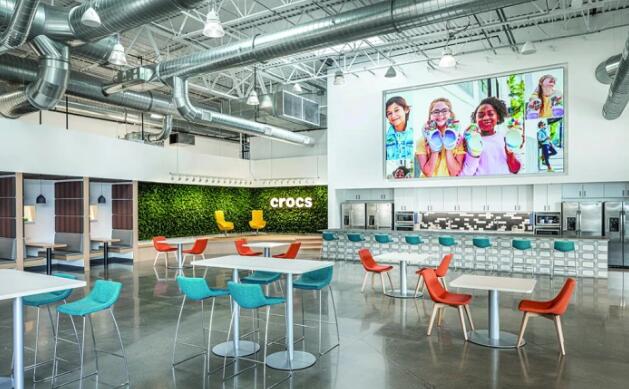A Look Inside Crocs’ Company Culture Where the ‘Come As You Are’ Tagline Is Brought to Life
For Crocs president Michelle Poole, a brand has to stand behind its message. “I believe very strongly that in order to be a truly authentic brand, you can’t just have a consumer facing tagline,” she said. “It starts from the inside out.”
That is the case for Crocs’ go-to line, “Come As You Are,” which is not only projected to consumers, but more importantly, resonates inside the company.
Internally, Crocs operates within three main pillars: Comfort for All People, Comfort Without Carbon and Comfort for Our Communities, each respectively centered on inclusivity, sustainability and philanthropy, explained Poole. “The inclusivity part is where ‘Come As You Are’ really comes to life,” she said. “We care deeply that this is a great place to come to work and that across the globe people feel like they can come and work for Crocs and be themselves. I’m someone who is very transparent and I would say we’re a very accessible leadership team. We always talk about wanting everyone to be comfortable in their own shoes.”
Shannon Sisler, EVP and chief people officer at Crocs, agreed that there is a strong desire to provide a comfortable, progressive work environment and to foster a space for employees to feel like their most authentic selves. “We’re only 20 years old. And you can feel that, right? We’re still growing and changing,” said Sisler. “I also think it’s a place where you see a lot of self-expression.”
Crocs’ Colorado headquarters, for instance, is a casual environment where workers wear the shoes with their personalized Jibbitz. There are also internal employee groups, dubbed Come As You Are Councils,
which span the globe.
“These councils discuss challenges people face from an inclusivity perspective, as they differ country by country and by different worker types,” said Sisler. “We’ve got people in retail stores and distribution centers and corporate offices, so it’s about making sure that we’re listening to those groups and addressing some of the situations that they’re facing.”
Listening remains a key attribute of the Crocs culture. The company uses Glint, a platform that provides insights to increase employee engagement, which also helps Crocs evolve and improve internal processes with feedback from its workers.
Sisler added that Crocs’ workforce — the majority of which (75%) are frontline associates in a distribution center or retail store — has proved to be passionate about the company’s ESG framework. “It’s making sure that underrepresented groups feel comfortable in our work environment,” she said, noting Crocs’ large LGBTQIA+ community.
Deanna Bratter, VP and global head of sustainability at Crocs, also highlighted the company’s emphasis on empowering women and minorities in the workplace.
According to Bratter, two thirds of Crocs’ global workforce are women, more than half of its senior leadership team identify as female and more than half of its U.S. workforce identifies as people of color. Crocs was also recently recognized by Forbes as one of America’s Best Employers for Women, earning the No. 3 spot out of 400 companies listed.
“We’re really proud of cultivating an employee base and a culture that supports inclusivity,” she said. “It’s also reflected externally in how we show up for our consumers.”
That drive extends to its Comfort for Our Communities pillar, which, among other things, prioritizes supporting important causes. As part of that commitment, the company has raised over $3 million to fight hunger with Feeding America through corporate donations and a consumer collection program in retail locations and ecommerce checkouts. And since 2020, Crocs has donated nearly 1 million pairs of shoes to health care workers on the frontlines of COVID-19.
Also in January, Colorado was hit by the Marshall Fire. At the time, Crocs donated to the American Red Cross to support their on-the-ground recovery efforts, as well as donating more than 30,000 pairs shoes to every student and staff member in the Boulder Valley School District, where employees actually participated in the distribution of the shoes.
Said Bratter, “Crocs is collaborative, and that strategy helps us identify where we want to have a voice, where we want to take action, asking how does that impact our people? How does it impact our consumers? It’s looking at a cross section of issues and prioritizing what’s most important to us.”
